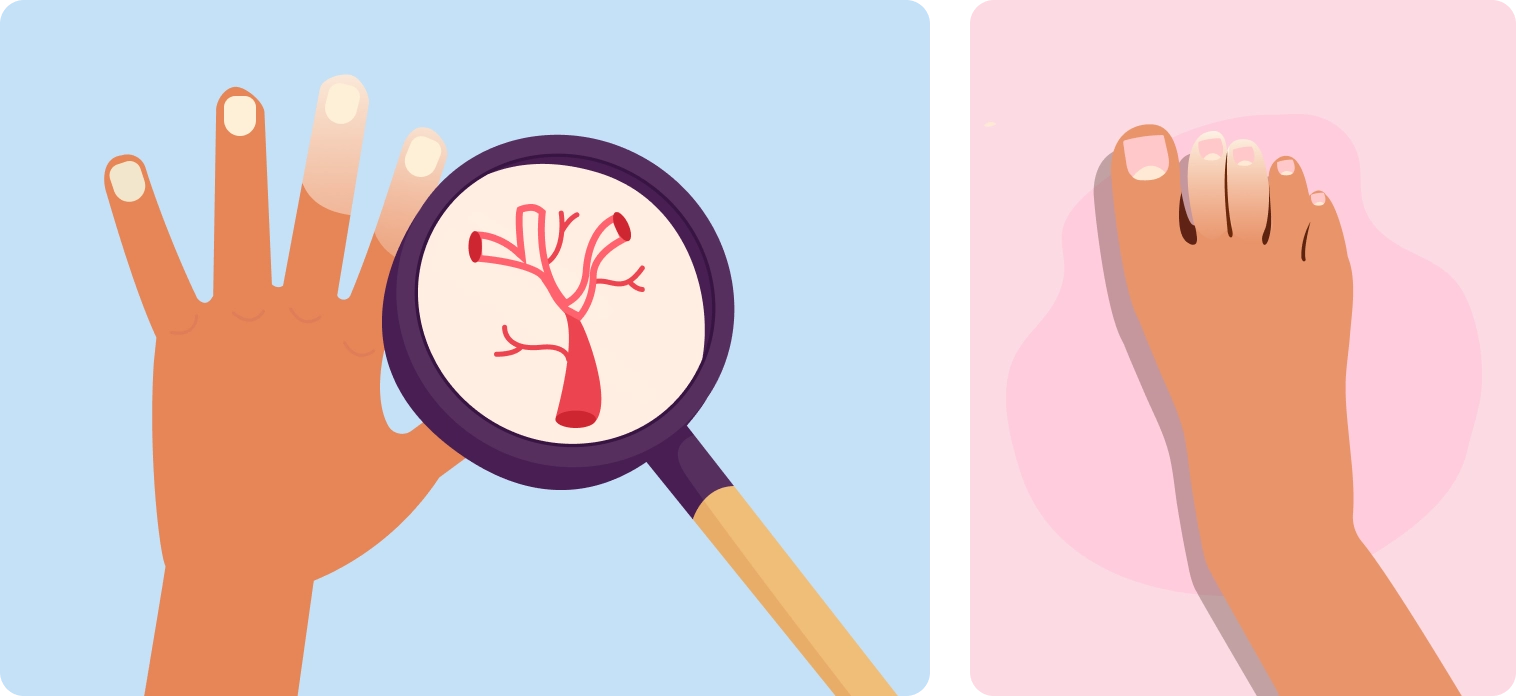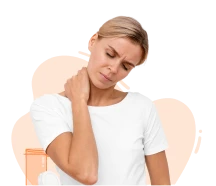Overview
Raynaud’s phenomenon (RP), also known as Raynaud’s disease or Raynaud’s syndrome, is a vascular disorder where the blood stops flowing properly to your fingers and toes but sometimes also the ears, nose, or lips in response to cold or stress. The condition is generally not life-threatening, but it can be uncomfortable and may lead to tissue damage in severe cases, or be a sign of a more serious condition.
Who gets Raynaud’s? Raynaud’s phenomenon can affect anyone, but women are more likely to get it than men and because it is triggered most often by the cold, it tends to affect people who live in colder climates.

Symptoms
The most notable sign of Raynaud’s phenomenon is the lack of circulation to the fingers or toes leading to the following symptoms (which can last from a few minutes to a few hours):
- Cold fingers or toes
- Pain or numbness
- White skin that can then turn blue
- Upon warming up the area, you may have a tingly, prickly, or ‘pins and needles’ feeling. The skin may also turn red.
Causes
Raynaud’s is typically triggered by cold temperatures or emotional stress resulting in vasospasm—a sudden and temporary narrowing (constriction) of blood vessels. However, the exact cause of Raynaud’s phenomenon is not fully understood. Hormonal imbalances, genetic predisposition, or abnormalities in the nervous system may play a role.
Certain underlying conditions such as rheumatoid arthritis, autoimmune diseases like lupus or scleroderma, vascular diseases, or repetitive hand trauma can also increase the likelihood of developing Raynaud’s phenomenon. In these cases, it is referred to as ‘Secondary Raynaud’s’.
Treatments
Treatment of Raynaud’s usually involves lifestyle modifications, such as:
- Avoiding cold temperatures
- Avoiding rapidly changing temperatures
- Bundling up
- Managing stress
- Avoiding smoke
- Getting exercise
In some cases, when your symptoms are very bad or getting worse, medicines may be prescribed to improve blood flow and prevent complications. They may include drugs or hormones that regulate blood vessel dilation such as:
- High blood pressure drugs such as nifedipine (a calcium channel blocker) or losartan (a vasodilator)
- Erectile dysfunction medicine such as sildenafil
- Antidepressants such as fluoxetine (Prozac)
- Prostaglandins
FAQ
Why are women more likely than men to get Raynaud’s?
Why women get Raynaud’s phenomenon more than men is not fully understood. Hormonal differences, smaller blood vessels, and a higher prevalence in women to get autoimmune diseases, may play a role.
What should I do if I have a Raynaud’s attack?
Get away from the cold or stressful situation. Gently and gradually warm your fingers or toes by massaging the area, moving or wiggling them around and applying warm (not hot!) water.
Does acupuncture help Raynaud’s?
Acupuncture seems to improve blood flow and has been shown to reduce the frequency of attacks in people with Raynaud’s.
More Info
To get more information about Raynaud’s Phenomenon, visit the NHS condition page.



















